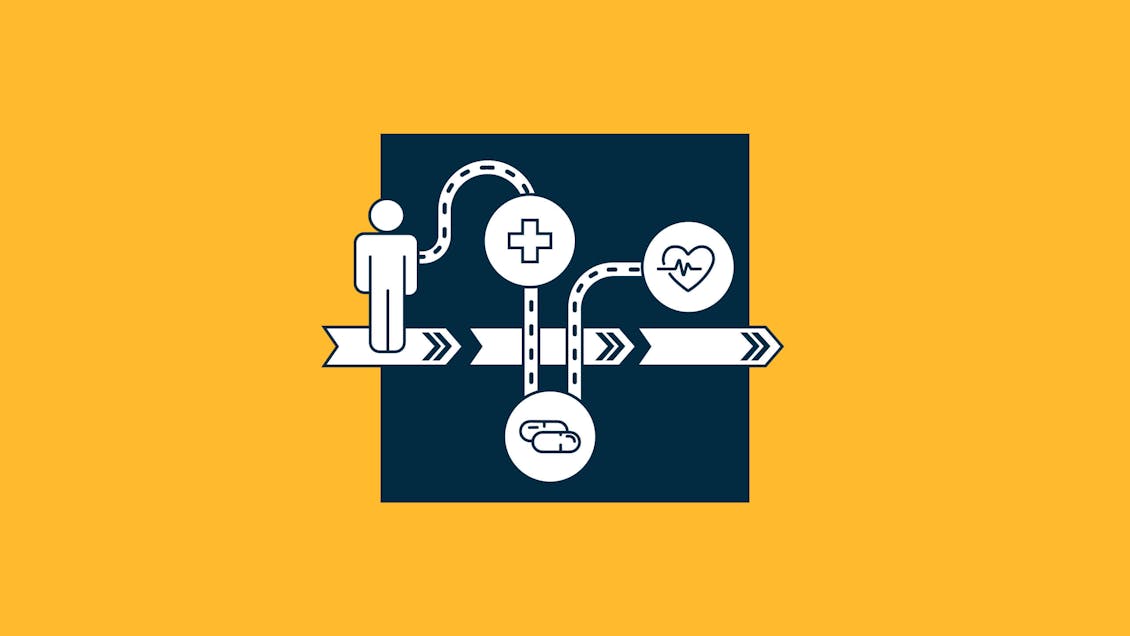The real problem with patient journey mapping

To reach patients in the right ways, at the right times, we need more than a map
Healthcare companies are recognizing that centering the patient experience with added support and services leads to more growth, and that’s a good thing. As EVP, Strategy & Experience Design, I’m often tasked with creating world-class digital experiences to help patients access the care and treatment they need to improve outcomes. Usually, as part of our deep discovery and research phase, our team creates patient journey maps (visual representations of treatment stages from the patient’s point of view) for our clients so they can align on decisions and next steps. But, oftentimes there’s a problem.
First, calling it a “patient journey” is selling the patient experience short. I recently participated in a webinar, “Mapping the Patient Odyssey for Digital Therapeutics.” I really liked the use of the term “odyssey” to describe how patients navigate their care, whereas “journey” indicates that there’s a linear path with a clear end, and that’s not always the case. For example, patients with chronic illnesses have ongoing needs, or a cancer patient experiences relapse.
Which leads me to the real problem with most patient journey mapping exercises: The focus is often on the disease state, rather than prevention and wellness. More often than not, they don’t take into consideration the patient’s full, complex, sometimes messy, lived experience.

Patients need help navigating healthcare complexity
The beginning steps for a patient seeking treatment are full of barriers and confusion. Let’s say a person has mental illness symptoms. They need to exhibit enough symptoms and undergo testing and fulfill the criteria to get a diagnosis. Their doctor or care team must be aware of the most effective treatment, and it may be that the patient has already tried different treatments before. So, the provider makes a treatment recommendation based on the best information they have.
Once treatment is decided, the patient has to take further actions, such as accessing insurance, Medicare, or Medicaid. Their medical benefits need to cover what the doctor has recommended. Then there’s access to and use of a pharmacy (think specialty vs. retail). Then, of course, the start of treatment and treatment adherence. All of this is roughly the same for every patient, but the difference lies in the drop-off points for each patient.
Research shows that many patients are nonadherent with their medication—they stop taking treatment as prescribed half of the time. The emotional toll on patients and their families in the beginning steps of the patient odyssey can be substantial.

Enter: Patient support programs
To better meet the needs of patients across therapeutic areas, more healthcare companies are introducing patient support programs (PSPs)—an ecosystem of services that empower patients with education, reimbursement support, financial assistance, and personalized resources through a cloud-based support platform.

How to holistically map the patient odyssey
At Modus, we bring empathy and a human-centric approach to patient experience design by following three critical steps for understanding and mapping the patient odyssey:
- In-depth discovery process: First, we assess existing research about our client’s stakeholders (patients, providers, caregivers, insurers) to get a robust understanding of the environment we’re working in. How are diagnoses made? What is the care continuum? At this stage, we’re also looking for gaps in the research: Which populations have been studied? Have any been overlooked?
- Stakeholder interviews: We conduct interviews with stakeholders to further reveal pain points and unmet needs. These conversations deepen our understanding of the research gathered during the discovery process and help uncover specific challenges and areas where patients may struggle to access or adhere to treatment.
- Engaging patients, caregivers, and healthcare providers: Finally, we engage directly with patients, caregivers, and HCPs to understand the emotional drivers and the “why” behind their behavior. From experience, we understand these groups are not monolithic; their experiences vary widely. For example:
- Patients may face unique challenges based on life stressors or access to technology.
- Caregivers can range from those deeply involved in daily care to those providing occasional oversight.
- HCPs interact with patients at different levels of frequency and depth.
From this thorough exploration of the patient experience—learning from patients themselves and those who care for them—we can incorporate our findings into visual tools that inform action plans to meet the diverse needs of more patients.
Empathy as a guiding principle
Of course, the ultimate goal of mapping the patient odyssey is to better communicate patient needs and enhance health outcomes. With the right approach, thorough research can reveal hidden opportunities to build on a foundation of empathy.
Design, therefore, can empower and engage by prioritizing individual patient experiences and addressing barriers at every stage of the often circuitous odyssey. By considering the human who will use the treatment, we can help a wider range of patients manage their treatment and navigate their next step.



